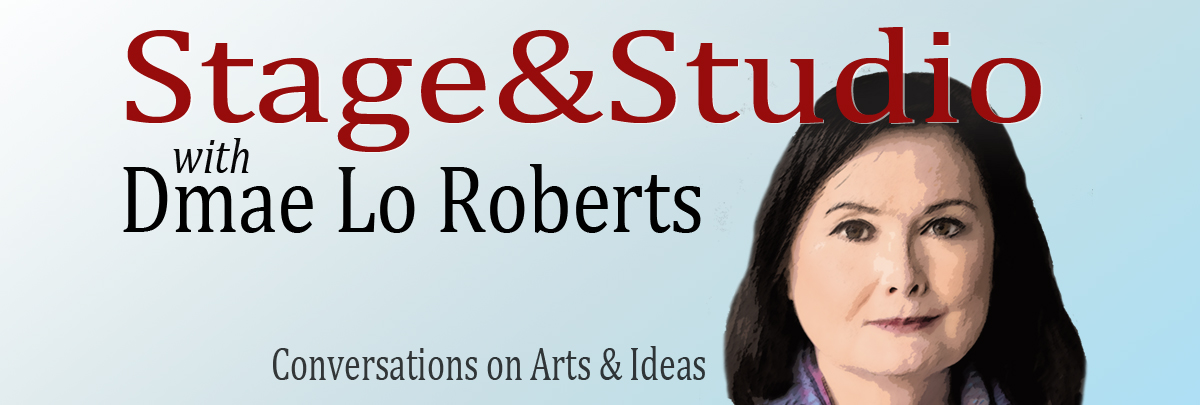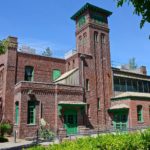Roberta Wong, Conceptual Artist & Tireless Advocate
(Photo: Julie Keefe)
Note: Dmae interviewed conceptual artist Roberta Wong the day the killings of six Asian women in Atlanta, Ga. that night on March 15, 2021 in an apparent (though not yet charged) hate crime. In the conversation between the two Asian-American women talked about Wong’s earlier work that challenged the stereotypes and racism of Asian American/Pacific Islanders (AAPI) and about how unfortunately her work is still relevant considering the rise of anti-AAPI hate incidents around the country.
Stop AAPI Hate gathered a report summarizing the 3800 reported incidents by AAPIs around the country. Out of the all the reports, 68 percent of the respondents were women. The overall amount of reports went up by about 2800 hate incidents nationwide from the period of March 19, 2020 to February 28, 2021. AAPIs who experience a hate incident can still report it at Stop AAPI Hate. Read the full report. Locally you can report hate incidents at Report Hate PDX.
________________________________________________
For her second Women’s History Month podcast episode on Stage & Studio on ArtsWatch, Dmae talked with Roberta Wong, a veteran artist who grew up in Portland and has created thought-provoking conceptual art focused on themes of identity, ethnicity, ritual and transformation.
Her works during the 80s like †“All Orientals Look Alike,†All Americanâ€and “Chinks†directly challenged people’s concepts of what it means to be Asian American. Wong even contested an assumption in a grant proposal to the Metropolitan Arts Commission (the precursor to Regional Arts and Culture Council) that slated all Asian artists under the “folk arts†category.
Podcast: Play in new window | Download
As the daughter of a family that for decades owned and operated the Tuck Lung restaurant in Chinatown until it closed, according to Wong, in 1991, Wong grew up working in the kitchen as support staff until she went to college in 1975. It’s small wonder that as an artist she also gravitated toward supporting other artists by volunteering at nonprofits such as the rental sales gallery at the Portland Arts Museum. Wong says PAM’s rental sales gallery was run by women volunteers who wanted to support the work of local artists. A few years later she was approached to start a new BIPOC arts gallery by Sue Busby, then the director of the Interstate Firehouse Cultural Center.
For 15 years she operated and curated the art gallery at the Interstate Firehouse Cultural Center when it was a vibrant multicultural arts center that also produced a full season of theatre and offered neighborhood youth arts programs and summer camps. She was first the IFCC gallery coordinator from 1985-1988. ten from 1991 she returned for IFCC’s 10th Anniversary Retrospective Exhibition with African American artists Philemon Reid, Charlotte Lewis, Adrienne Cruz, Al Goldsby, Richard Brown and Bill Rutherford. From 1995-2003, Wong became IFCC gallery director, produced IFCC‘s annual Kwanzaa exhibition and celebration and implemented a four-year pilot project—the IFCC Community Artist Award and Residency program, honoring local mid-career visual artists for their community service: Adriene Cruz, Lillian Pitt, Pat Courtney Gold and Richard Brown.
Most recently, Wong worked with artist Horatio Law, who curated Wong, Ellen George and Lynne Yarne in an artists exhibition titled “Descendant Threads” at the Portland Chinatown Museum, where she still volunteers. Past exhibitions include: Rwong Ideas, IFCC Silver Anniversary Featured Artist; Beyond Talk: Redrawing Race, a touring exhibition curated and exhibited by The Wing Luke Asian Museum in Seattle, WA, at South Seattle Community College, and the Phinney Center Art Gallery in Seattle; also, group exhibitions at Evergreen State College, Portland Community College, Sylvania Campus, Portland State University and the Hillsboro Community Cultural Center in Hillsboro, OR.
Roberta Wong is an unsung artist and tireless arts advocate which makes it even more important to hear her stories and memories from growing up in Portland in the 1960s through her passage into a professional artist in the 1980s and as a respected gallery director from the 1990s through 2002 .Â







